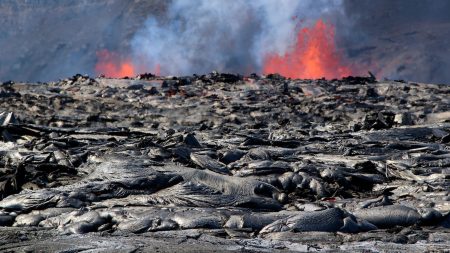The Growing Threat of Space Debris to Aviation
The increasing activity in space exploration and the aviation industry has led to a growing concern about the risks posed by space debris to aircraft. A recent study published in Scientific Reports highlights the potential dangers of rocket bodies and other space junk re-entering Earth’s atmosphere and colliding with airplanes. While the probability of such an event is currently low, the rising number of satellites, spacecraft, and rocket launches has elevated the risk to a level that demands urgent attention. As the use of outer space expands, the challenges associated with managing space debris have become more pressing.
Understanding Space Debris and Its Origins
Space debris encompasses all the remnants left behind by human activities in outer space, including discarded rocket parts, satellites, and other equipment. According to Aaron Boley, an associate professor of physics and astronomy at the University of British Columbia and a co-director of the Outer Space Institute, the growth in space exploration has led to a significant accumulation of debris in Earth’s orbit. Rockets, which are used to launch satellites and other spacecraft, often leave behind large pieces of material that can remain in orbit for years. These pieces of debris, ranging in size from a few millimeters to several meters, pose a serious threat to both aircraft and spacecraft.
The number of large debris pieces, such as those the size of a softball or larger, is estimated to be around 50,000. However, when considering smaller objects, the count likely runs into the millions. These objects, whether large or small, are subject to the natural decay of their orbits, leading them to re-enter Earth’s atmosphere uncontrollably. While many of these objects burn up completely during re-entry, some survive and can cause significant damage upon impact.
The Risks Posed by Re-Entering Space Debris
The study focuses particularly on rocket bodies due to their size and heat-resistant properties, which make them more likely to survive re-entry and pose a threat to people and vehicles on the ground, at sea, or in the air. The objects tend to ablate, or burn up, as they pass through the atmosphere, but they do not always disintegrate completely. This incomplete destruction means that parts of the debris can still reach the Earth’s surface, potentially causing harm.
The research also highlights the regional disparities in the risk posed by re-entering space debris. By analyzing air traffic data from 2023, the study found that areas with high air traffic, such as Vancouver, Seattle, and the Eastern seaboard of the United States, have a roughly 25% chance each year of being disrupted by falling space debris. This regional variation underscores the need for targeted strategies to mitigate the risks associated with space debris.
Balancing Safety and Economic Concerns
The challenge for officials is deciding whether to take action to protect against the risks posed by space debris. Aaron Boley notes that the decision to close airspace or take other precautionary measures involves weighing the low probability of a debris strike against the potential economic disruption and additional safety risks that could arise from diverting or delaying flights. For example, in 2022, Spain and France closed portions of their airspace when a 20-ton rocket body was expected to re-enter the atmosphere. While the debris ultimately landed in the Pacific Ocean, the closure caused significant delays for 645 aircraft and required some planes to be diverted. This incident illustrates the delicate balance between ensuring aviation safety and avoiding unnecessary disruptions to air travel.
Lessons from Past Incidents
The aviation industry’s awareness of the risks posed by space debris has grown significantly since the 2003 Columbia space shuttle disaster. During that tragedy, the shuttle broke apart while re-entering the atmosphere, scattering debris over a wide area. Following the disaster, analysts realized that aircraft flying through the debris field had been at risk of collision. This revelation led to a greater emphasis on aviation safety in the context of space debris. Today, the aviation industry is more proactive in considering the potential risks of space debris when making decisions about airspace closures.
In recent years, there have been several close calls and incidents involving space debris. For instance, in August 2022, debris from a SpaceX craft was found on the property of two Australian farmers. Similarly, in March 2024, a cylindrical piece of space debris tore through a home in Naples, Florida. These incidents serve as reminders of the potential consequences of uncontrolled re-entry and the need for better strategies to manage space debris.
The Path Forward: Mitigating the Risks of Space Debris
Addressing the challenges posed by space debris requires a multifaceted approach. Scientists and policymakers are working to develop better tracking systems for debris, improved models for predicting re-entry trajectories, and more robust protocols for managing air traffic during potential debris events. Additionally, international cooperation will be crucial in addressing the global nature of the problem. By sharing data and coordinating efforts, nations can work together to minimize the risks associated with space debris and ensure the continued safety of air travel.
As the use of outer space continues to expand, the issue of space debris will only become more pressing. The study’s findings serve as a reminder of the importance of proactive measures to mitigate the risks posed by re-entering debris. While the probability of a space debris strike on an aircraft remains low, the potential consequences are too great to ignore. By balancing safety concerns with economic realities, officials can work to protect both the aviation industry and the traveling public from the growing threat of space debris.















